Thank you for visiting! By the way… any links on this page that lead to products on Amazon and other stores/partners are affiliate links Aquarium Store Depot earns a commission if you make a purchase.
Clownfish are one of, if not, the most popular fish in all of the aquarium hobby. These saltwater fish have been made popular by Pixar’s animated film, Finding Nemo, but their bright colors and easy care secure their spot at number one. There are many types of clownfish that you can purchase due to breeder efforts.
Introduction to Clownfish
Believe it or not, there are actually 30 different species of clownfish currently known in the Amphiprioninae subfamily, all varying in shape, size, and temperament. The saltwater aquarium hobby has further diversified this classic fish, introducing more ornate patterns and designs as well as some longfin variations.
By far, the most common species to come across are:
- False percula clownfish/ocellaris clownfish (Amphiprion ocellaris)
- Percula clownfish (Amphiprion percula)
- Tomato clownfish (Amphiprion frenatus)
- Clarkii clownfish (Amphiprion clarkii)
- Pink skunk clownfish (Amphiprion perideraion)
- Maroon clownfish (Premnas biaculeatus)
Clownfish are usually most recognized by their orange body and alternating three white stripes outlined in black. These saltwater fish are commonly seen in pairs as they are sequential hermaphrodites. This means that fish are initially born as males and have the unique ability to become females if the need arises; at this point, the female will become larger in size.
Clownfish are also known for their symbiotic relationship with sea anemones: the clownfish receives shelter from predators while the anemone is protected and delivered food and waste from the fish. Clownfish have evolved to excrete a protective mucus that keeps them safe from the damaging sting of anemones; interestingly, some clownfish already have this mucus present in their skin while others need to acclimate themselves to the specific sting of the anemone.
However, this mutualism does not always translate to the aquarium setting. The truth is that many clownfish are aquacultured and may not feel the need to host an anemone. While this may disappoint many new hobbyists, clownfish are still arguably one of the best fish you can have for any saltwater aquarium setup.
How Long Can They Live?
Clownfish can live a considerably long time so it’s important to make sure that the species you choose is completely compatible with your reef tank.
On average, clownfish live 3 to 5 years in captivity. However, it’s not unheard of for them to live close to a decade with ideal conditions. They are extremely hardy and will survive most tank crashes and tank transfers, though we definitely recommend keeping those to a minimum!
Tank Requirements
Most species of Clownfish are incredibly hardy and can adapt to most conditions. They can be kept in fish only (FO), fish only with live rock (FOWLR), or full reef setups. Most hobbyists like to keep them in pairs, though they will do just fine on their own as well. They are great saltwater fish for beginners.
The minimum tank size recommended for a pair is 10 gallons, though a 20 gallon tank will allow for more space to swim as well as additional tank mates. Clownfish establish territories and don’t venture far from those areas they claim as their own in the tank.
If an anemone is introduced, the pair may host it, though this is not guaranteed even if they are wild-caught. On the other hand, you may have a pair that completely ignores the anemone and hosts something like a powerhead instead.
Other funny clownfish behavior includes sleeping in odd positions at night. This can be unsettling to see at first as you see your marine fish swimming parallel to the side of the glass, but this is typical clownfish behavior and nothing to worry about.
Which Anemone Is Right For Them?
Though it’s never guaranteed, there are some clownfish/anemone pairings that work better than others. Here are some of the most common pairings with the greatest success (video source).
As most species of clownfish derive from the ocellaris clownfish species, most hobbyists will need to look for a bubble tip anemone (Entacmaea quadricolor), magnificent sea anemone (Heteractis magnifica), sebae anemone (Heteractis crispa), or giant carpet anemone (Stichodactyla gigantea).
Keep in mind that clownfish do not need to have an host anemone to live a full life. In fact, they mainly use their anemones in the wild for protection, which they shouldn’t need in the reef aquarium setting. However, if you really want your clownfish to host an anemone, then you might need to train them.
It should also be noted that clownfish may host other similar-looking corals in the tank as well, like Euphyllia. This can be stressful and detrimental to the overall health of the coral.
The Candidates
In a hurry? I recommend purchasing your clownfish from ORA via Saltwater Aquarium
No matter what kind of clownfish you end up choosing, their care requirements are very similar in regard to water conditions. However, it is still important to consider the mature size of the fish and temperament as spatial needs and aggression can vary greatly across different species.
Thanks to the saltwater aquarium hobby though, they are many different varieties of clownfish available with one for every kind of tank setup. Here are 15 that we are going to look at today:
The Best 15 Varieties
The ocellaris clownfish (Amphiprion ocellaris), also known as the false percula clownfish, is the most classic species of clownfish available. They are easily identifiable by their three white stripes against their vibrant orange body, though they may also come in black and white as well.
These 15 saltwater fish stay small, growing to about 3 inches at mature size. This allows them to be comfortably kept in nano tanks. Ocellaris clowns are also relatively easy to breed, which has allowed for them to be aquacultured. This reduces their price, produces a much hardier fish, and makes them that much more available to hobbyists.
I included a video below from our YouTube channel. We include links to purchase these fish and more details in the blog post below. If you like our content, subscribe to us on YouTube as we post new videos each week.
Because they are so classic and easy to breed, these fish have also become the basis for many designer breeds as we will see. Let’s look in detail at these fish below.
1. Snowflake
Use Code ASD5 for 5% off!
A variety of clownfish that has wider white stripes than a traditional ocellaris clownfish
The snowflake clownfish is a relatively common breed to come across. These fish are the result of the selective breeding of ocellaris clowns and vary in grade.
In general, snowflake clownfish grow to be about 4 inches when fully mature. The main difference between snowflake and ocellaris clowns is the width of the white stripes, which varies across individuals. There are three grades of snowflake clown depending on the extent of this variation: snowflake ocellaris, premium snowflake ocellaris, and ultra snowflake ocellaris.
Snowflake ocellaris clownfish. This grade is the most available and shares the most similarities with the common ocellaris clownfish. The snowflake ocellaris has irregular, broadened white stripes. The orange background may be darkened and gradient into the white stripes.
Premium snowflake ocellaris clownfish. These clownfish are mostly white with some apparent orange. The first two stripes have joined together and the third stripe near the caudal fin is greatly exaggerated, extending onto the tail.
Ultra snowflake ocellaris clownfish. The ultra snowflake ocellaris is the highest grade of this breed and has the least visible orange. All three stripes have fused together, leaving only portions of the head and fins orange.
Regardless of which grade your snowflake ocellaris is, they are very hardy fish and can be kept in a variety of setups.
2. Picasso
Use Code ASD5 for 5% off!
A very popular designer clownfish with a more pronounced middle stripe. Regular and premium grades available
The Picasso clownfish is another popular breed of clownfish that is relatively common to come across at your local aquarium store. These fish are based on the percula clownfish (Amphiprion percula) and grow to be about 3 inches.
Similar to the snowflake clown, Picasso clownfish have extended white stripes that are based on a grading system. Because they are percula clownfish, their orange base coating can sometimes have more hints of yellow. There are two main grades of Picasso clownfish: regular and premium.
Picasso clownfish. The regular grade of the Picasso clownfish has soft extended white stripes, usually most notable in the middle and third bar.
Premium Picasso clownfish. This grade is a much more exaggerated version of the regular Picasso and should have at least two conjoined white stripes.
There are misbar variations of the Picasso clownfish, which may cause the stripe closest to the caudal fin to be missing or broken.
3. Frostbite
A nearly all white clownfish. Gets darker as they age. Younger fish have more orange
Here is where identifying clownfish breeds can start to become tricky. The frostbite clownfish is a variety of ocellaris clownfish and could easily be mistaken for a type of snowflake. In fact, these saltwater fish are a mix between premium snowflake clowns and Wyoming white clowns. There are a few ways to tell them apart, though!
Frostbite clownfish grow to be 4 inches. Their bodies are entirely white except for a few spots here and there, which resembles the effects of frostbite, earning them their designer name. Interestingly, these fish get darker as they age; even though you might have a young frostbite clownfish with a lot of orange, those spots will gradually get darker and darker until they are black.
As a type of ocellaris clown, these fish have very basic needs.
4. Wyoming White
Originating from a breeder in Miami, this variety used to be very rare. Grows to 4 inches
These fish are very similar in appearance to Maine blizzard clownfish. However, Wyoming white clownfish were bred from ocellaris clowns while Maine blizzard clownfish were bred from percula clowns. The difference is very small but can be seen in the color of their eyes and the number of spines in their dorsal fin.
Otherwise, Wyoming white clownfish grow to be about 4 inches. The main identifiable feature of these fish is the black spot right above their gills against their nearly all-white body. All orange marks will gradually turn black as the fish matures.
These fish are relatively rare and have only started to be commercially bred. Again, their needs are identical to those of regular ocellaris clowns.
5. Phantom
A black and white clownfish that has attributes of a snowflake, black ice, and Darwin variety clownfish.
The phantom clownfish is the first black-colored clown on this list, though still a variety of ocellaris. Fully grown, these fish are 4 inches long.
These fish are a delicate mix between premium snowflake ocellaris clownfish, black ice clownfish, and super black Darwin ocellaris clownfish. This makes for a velvety black base color with jagged white stripes.
Phantom clownfish have also been bred for a longfin variety. These fins are more rounded with a wider margin than other types of longfin clownfish, though their phantom colors stay intact.
6. Domino
A dark clownfish with a singular white dot. Fish becomes darker as it ages
The domino clownfish is aptly named after its singular white spot over its gills against its dark black body; sometimes this spot will be extended into a misbar around the head. The only other color on this fish is its brown snout, though the presence and intensity of this color will vary.
These types of clownfish are derived from black ocellaris clownfish and grow to be 3 inches. As juveniles, they are a darker brown color which slowly fades to black as the fish ages.
In addition, there are longfin varieties of the domino clownfish. However, these fish are much lighter in coloration and keep their juvenile shades of brown. They are also much more likely to have odd white markings apart from the dot on the gills. This includes misbars around the head as well as in the middle of the body.
As a type of ocellaris clown, the domino clownfish has few extra care requirements.
7. Darwin Black Ocellaris
A black snowflake that resembles a traditional ocellaris with a misbar stripe in the middle
The Darwin black ocellaris clownfish is a simple variation of the ocellaris clownfish with the same three stripes, just against a fully black body. These fish grow to be 4 inches long and have the same requirements as their more colorful counterparts.
Darwin black clowns are named after their natural habitat off the coast of Darwin, Australia. These fish live in very confined ecosystems and harvesting is limited. Because of this, individuals that become available in the aquarium trade are largely captive-bred.
Another variation is the Darwin misbar which features interrupted white stripes while maintaining the integrity of the black base color.
8. Midnight
A deep black color clownfish. A rare color for a saltwater fish
The midnight clownfish is unmistakable. These fish are deep black and really bring a rarely seen color to the aquarium setting.
Like other dark types of clownfish, midnight clowns are lighter shades of brown as juveniles. Some of that brown stays on their snout, but more desirable midnight clowns will have an entirely black body.
There is another type of midnight clown with some hints of white: the midnight lightning clownfish. These fish are the result of midnight clowns and phantom clowns, resulting in a unique, short, and jagged white patch right below the dorsal fin. As you may have guessed, this streak of white greatly resembles a bolt of lighting against a black backdrop.
Midnight lightning clowns typically have a jagged first stripe and may also have a misbar third stripe.
Both midnight lighting and midnight clowns are breeds of ocellaris and require no special care.
9. Black Storm
A popular designer clownfish that resembles a storm trooper
Black storm clownfish have increased in popularity over the past few years and are pretty easy to find in aquarium stores despite their long history.
These clownfish come from a long line of breeding through DaVinci ocellaris clownfish and black ocellaris clownfish. A very rare mutation caused the fish to be black with white spots that had crisp lines between colors. Eventually, this resulted in the white-faced black storm clownfish only just a few years ago.
Shortly after that, a longfin black storm clownfish variety was created. Both varieties of black storm clownfish reach a mature size of about 4 inches.
10. Snow Storm
A designer clownfish that is a mix of a black storm clownfish and a phantom clownfish
Another ocellaris-based breed, the snow storm clownfish, is actually a variety of black storm clownfish crossed with a phantom clownfish. They reach a maximum size of 4 inches.
This cross resulted in an all-white fish with black eyes, fins, and lips. While most other white clownfish have color on their face, the snow storm is distinct in only having color to the eyes.
Similarly, these fish have been bred to also feature long fins.
11. Tomato
A clownfish that is widely available, though not kept as often. Grows to 6 inches in size
Tomato clownfish (Amphiprion frenatus) are widely available, though not one of the most commonly kept types of clownfish. These fish are named after their bright red coloration and round appearance, similar to that of the fruit. They have a singular white stripe that goes across their gills as adults and two when they are juveniles.
These clownfish are some of the larger ones available, reaching 6 inches when fully grown. They are typically more aggressive than other clownfish species and sometimes regarded as one of the most aggressive clowns. Because of this, they do best alone or in predetermined pairs. They will not tolerate other clownfish species.
12. Gold Striped Maroon
A large clownfish with gold markings. Their large size can make them aggressive in some community tanks
The gold stripe maroon clownfish is a very attractive fish and also very large. Growing to 6 inches, this is the largest clownfish species available. This fish are a variety of maroon clownfish (Premnas biaculeatus) but more ornate.
Gold stripe maroon clownfish are very similar in appearance to white stripe maroon clownfish with a deep red body and three thin stripes; however, gold maroons have gold in their stripes and white maroons have white in their stripes. This can be tricky though as gold maroons don’t develop their signature colors until they’re at least a year old.
An interesting feature about the gold stripe maroon clownfish is that they have spines on their cheeks below their eyes.
13. DaVinci Ocellaris
Similar to a Picasso clownfish, but these fish originate from ocellaris instead of perculas. Three grades available
The DaVinci ocellaris is a mix between the Wyoming white clownfish and regular ocellaris clownfish, resulting in unique swirls that resemble an artist’s brush strokes. These fish are very similar to the Picasso clownfish but come from ocellaris clowns instead of perculas.
There are three main grades of DaVinci ocellaris clown, all reaching 3 inches in size: DaVinci ocellaris clownfish grade B, DaVinci ocellaris clownfish grade A, DaVinci ocellaris clownfish grade extreme.
DaVinci ocellaris clownfish grade B. These fish are the lowest grade and have three distinct swirly white stripes against a deep orange body; sometimes, two stripes are connected but only on one side of the body.
DaVinci ocellaris clownfish grade A. This grade has the same colorations, but at least two stripes are connected on both sides of the body.
DaVinci ocellaris clownfish grade extreme. These clownfish are the most desirable and have all three stripes connected on each side of the body to create a true masterpiece.
14. Nearly Naked
Probably the best-named fish in the reef aquarium hobby, the nearly naked clownfish lost its stripes. Instead, these fish are all burnt orange with only a few unique white stripe remnants here and there.
These 3 inch fish come from a long line of selective breeding of ocellaris clowns. Because of this, they bring an oddity to the aquarium without needing any extra care.
15. Longfin Mocha
A clownfish that has long fins like a fancy goldfish. Extra care should be taken to prevent injury to their fins
Admittedly, the longfin mocha clownfish is an odd-looking fish. These clownfish look just like their distant ocellaris parents in terms of colors and stripes but have extremely long fins.
Longfin varieties haven’t quite completely caught on in many saltwater aquariums, but there is a certain elegance that comes with owning one of these fish. Though they don’t require any special care, is it best to cover intake grates with sponge to prevent injury to their delicate fins.
What Is The Rarest Among Them?
On the other hand, one of the rarest types of clownfish is the McCullochi clownfish (Amphiprion mccullochi), also known as the whitesnout anemonefish1.
These saltwater fish look completely different from your typical ocellaris clownfish with a dark brown body, singular white stripe, and white-tipped mouth. However, their appearance isn’t what makes them so rare.
Instead, these fish have a very limited natural range near Lord Howe Island, an island off the coast of Australia. These waters are rarely fished, which makes acquiring the McCullochi clownfish nearly impossible.
Though this fish is one of the rarest clownfish, the McCullochi clownfish is not the most expensive. In 2016, a peacekeeper maroon clownfish sold for nearly $9,000. These fish are a variety of the maroon clownfish (Premnas biaculeatus), and have intricate webbing all across their bodies, making them one of the most ornate breeds available.
Which Is The Most Common?
Before we get into the most expensive and desirable breeds of clownfish, we have to mention one of the most common types of clownfish: the ocellaris clownfish.
Closing Thoughts
There are many different kinds of designer clownfish available and the list gets longer every day. You have your classic false percula clownfish, true percula clownfish, tomato clownfish, skunk clownfish, maroon clownfish, and Clarkii clownfish, but sometimes you just need something unique and different.
Luckily, most captive bred clownfish derive from these original species, so care requirements don’t change much. However, always research the fish you plan on getting before you add them to your reef tank!
- About the Author
- Latest Posts
I’m thrilled that you found Aquarium Store Depot! Here you’ll find information on fish, aquariums, and all things aquatics related. I’m a hobbyist (being doing this since I was 11) and here to help other hobbyists thrive with their aquariums! I adhere to a high quality Editorial Process and Review products with real life field usage and practical analysis.

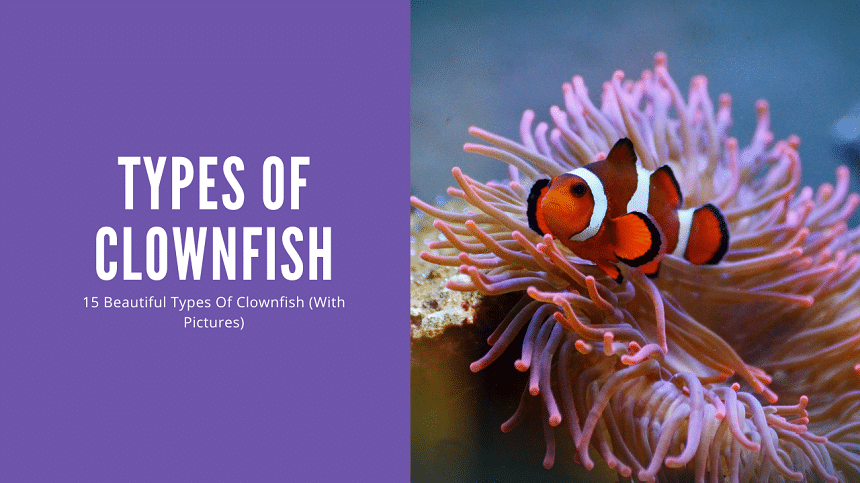
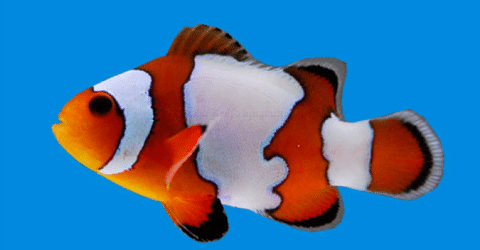
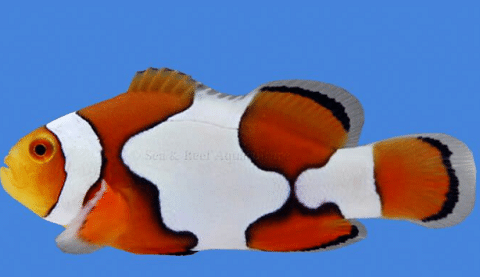
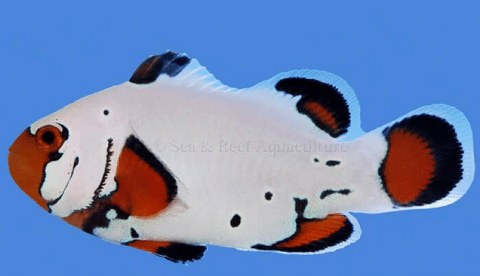
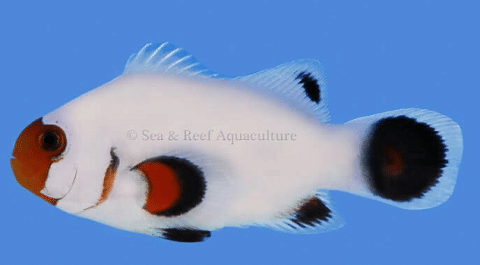
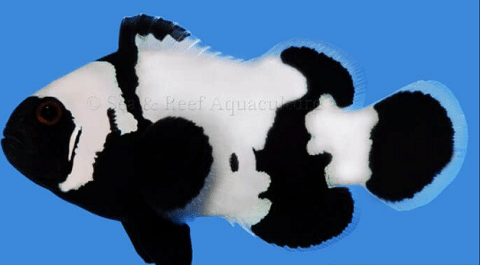
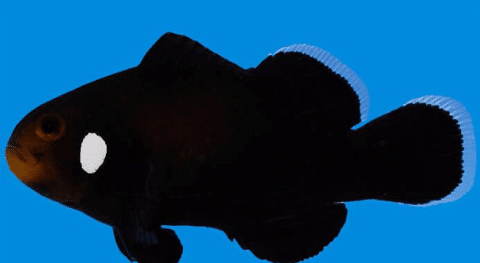
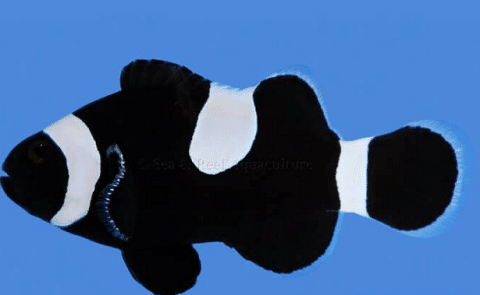
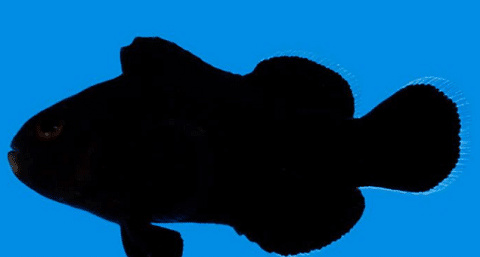

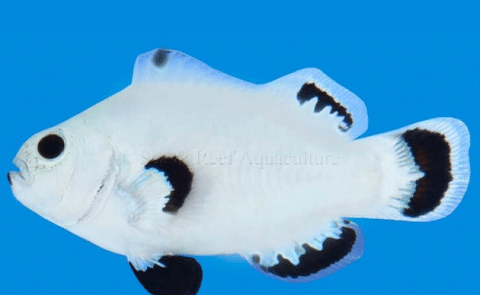
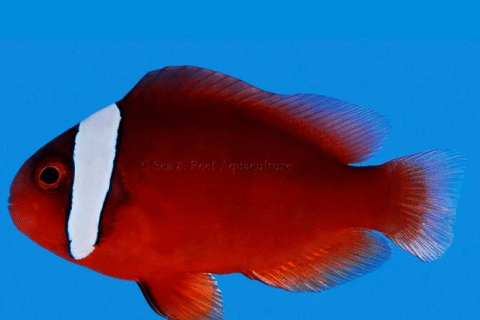


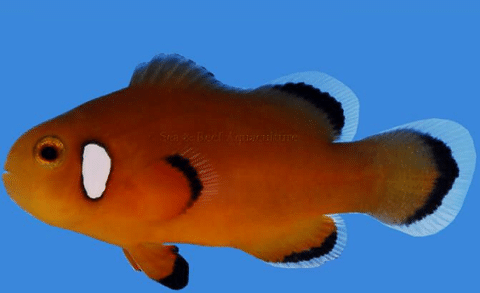

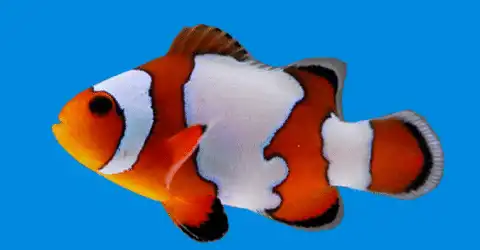
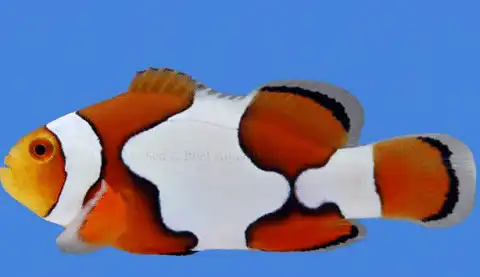

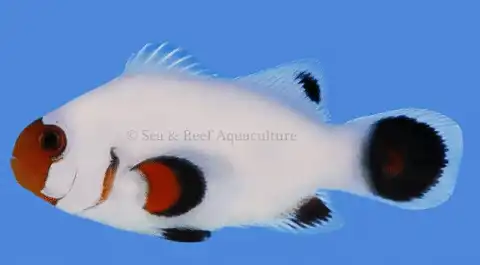

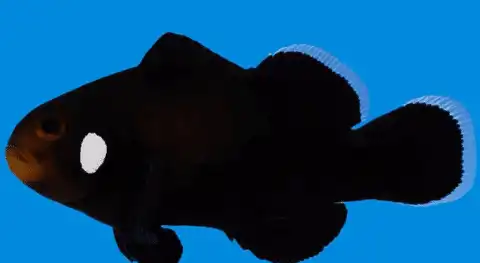


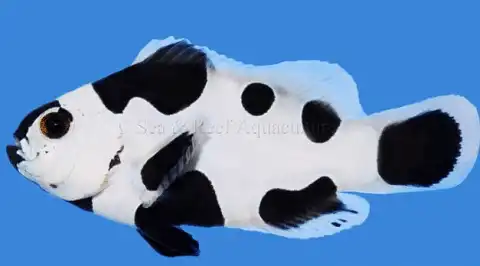
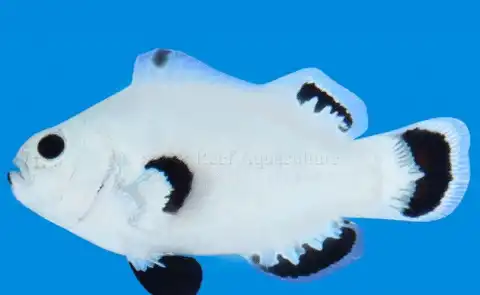
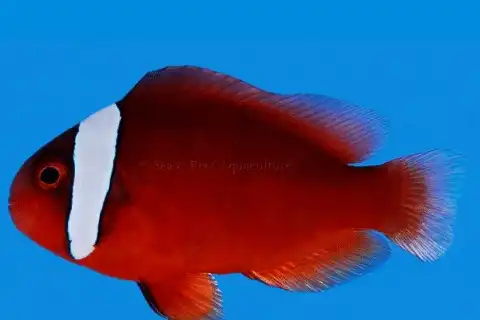
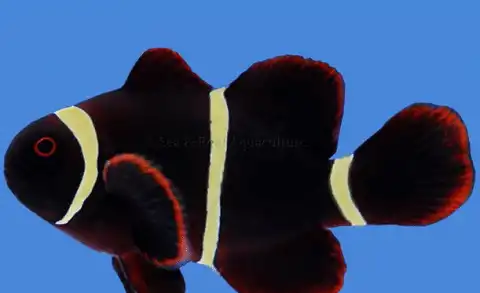
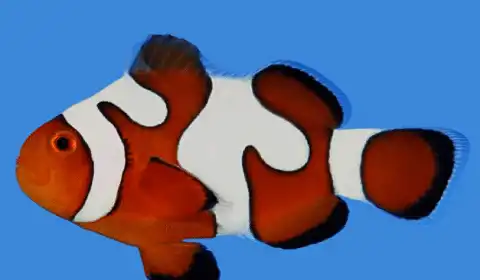
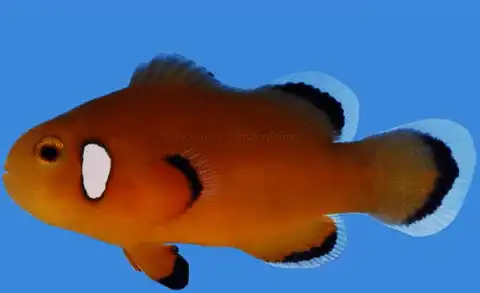





i love clown fishes they are so cute